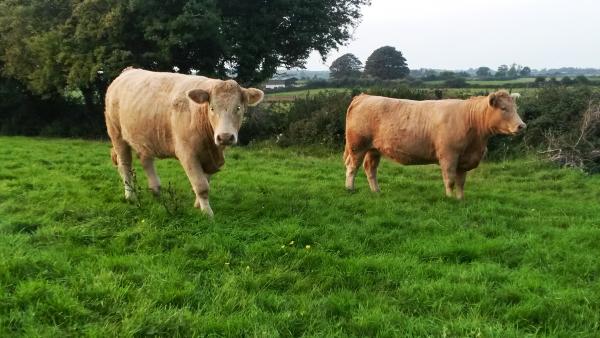With Autumn now upon us, thankfully we are getting an extended spell of dry warm weather, here in Sligo. The majority of bull weanlings are now sold and attention is turning to the beef heifers on the farm.
This is something of a new venture for me, as previously heifers not suitable for breeding, were sold as either weanlings or stores. Having looked at the figures and considered my various options, I am now bringing a number of heifers to slaughter each year.
Bringing these heifers to slaughter adds value to each animal rather than taking the weanling or store price available on the day. It also increases the output and stocking rate for the farm, figures that are low when compared to the Teagasc BETTER farms.
Before starting the final finishing period, all heifers were weighed. The weighing scales is one of the most used pieces of equipment on the farm. On average, the current bunch of heifers at 590 kgs, are 60 kgs heavier than a similar bunch this time last year. I am putting this down to the poor Spring of 2013, as well as a better understanding and use of grass on my behalf.
This is my second year of grass measuring and I have increased the number of paddocks in use on the farm. For next year, I intend to reduce paddock sizes further so as to achieve the target of grazing out each paddock in three days
The aim is to finish these heifers at 22 – 24 months and an average carcass weight of over 330 kgs. Having spent the summer grazing grass in a paddock system, these heifers are now on good quality grass along with a barley maize meal mix. The intention is to feed meal for sixty days prior to slaughter, in order to get the required fat cover. I will also weigh these animals before going for slaughter, so as to get an accurate kill-out percentage for each animal.
I am a big believer in regular weighing of animals on the farm because as the saying goes, “you cannot manage what you cannot measure”.
This week I received my latest results for BVD samples sent away. I started ear notch sampling all breeding stock in 2011, the year before the voluntary phase of BVD testing was introduced as a national scheme. To date thankfully, I have had no positive results indicating any persistently infected animal in the herd.
Unfortunately, there are a number of these PI animals remaining on Irish farms. This has resulted in Animal Health Ireland introducing a monitoring phase for all those farmers that started testing in 2012. The monitoring phase involves continued testing of all calves born on the farm in 2015. Sometimes we farmers are our own worse enemies






 This is a subscriber-only article
This is a subscriber-only article












SHARING OPTIONS: